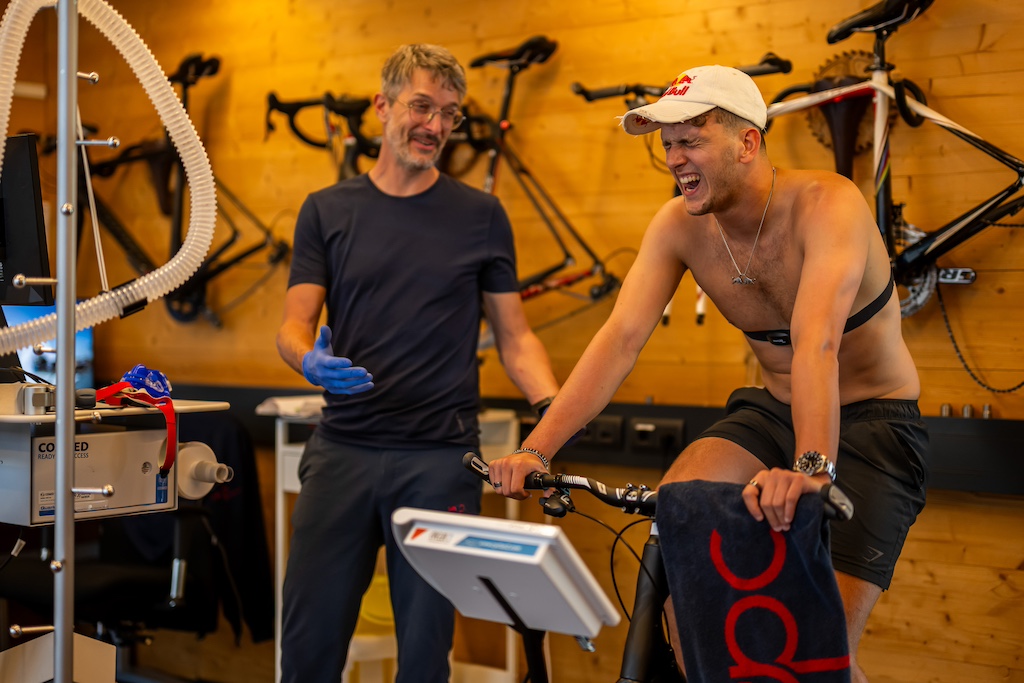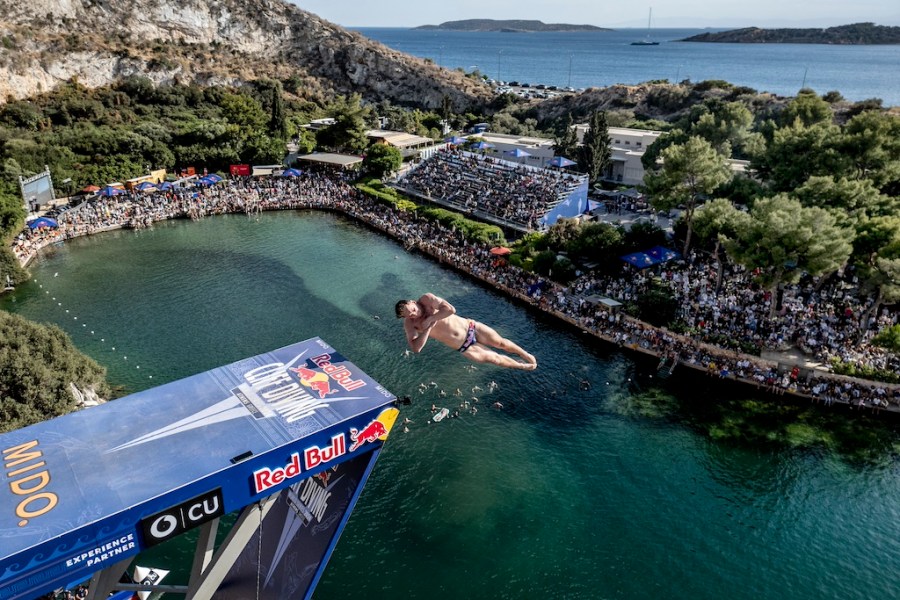I spoke to the rising star of British cliff diving Aidan Heslop as he attempts to win his first World Series title.
Aidan Heslop started cliff diving in 2018, becoming the youngest diver in the Red Bull Cliff Diving World Series, at 16, when he made his debut at the season finale in Polignano a Mare, Italy. In his second appearance in 2019, Heslop landed on the podium in Bilbao, Spain, performing the same dive list as record champion Gary Hunt.
With back-to-back runner-up finishes in the last two seasons, Heslop has proven himself as a major player in the sport. I grabbed a moment with him during this year’s thrilling World Diving World Series to discover how fit and fearless you have to be to leap off cliffs for a living.
Aidan, what kind of strength and conditioning work do you do for cliff diving?
I do a lot of bodyweight conditioning in the dry dive before training. Lots of core work. Our coach set all the exercises up for us and the bodyweight conditioning helps with speed and power in our dives so that we can jump higher, spin faster, twist quicker and then in the gym it’s more heavy weights but low reps. So again, that’s working on power more than strength to get bigger jumps off the platform and more time in the air. It’s all with the aim to give me more time to do more somersaults and twists.
Where do you train?
I’ve been training recently at Red Bull’s Athlete Performance Centre, which has been super helpful as we get an unbelievable amount of information just from a small amount of testing. I’ll go home and take the findings to my coach and my S&C coach. A lot of the training here is endurance-based, which is helpful for recovery and long-distance travelling.

Presumably a fear of heights wouldn’t fly in this sport?
Ha, no! When I was getting into high diving, it was less about the fear of the heights and more for me about the adrenaline of going higher and trying harder dives. I was very young to start high diving for my time. There are some juniors now, but at the time I was by far youngest and I didn’t really have that fear kick in yet. I was always that kid that would mess around on the trampolines and throw my body into stupid situations. I think that was helpful for my progression at the start of my sport. Now there’s more caution around the safety involved to keep my body as healthy as it can be in and ready for the big impact of the dive.
What’s your favourite dive?
My favourite dive at the minute is where I have to do two front twists – that is one of the hardest dives in the world. I’ve got a lot more comfortable with it in the last three years and it’s usually quite a high scoring dive. I also really love my reverse double pike. It’s a lot slower and I have more time in the air, adopting a kind of Jesus pose as I fall from 27m. That probably sounds weird to some people but it’s one of the coolest feelings for me.
And do you have any favourite diving locations?
Takajo in Japan. It’s in the middle of nowhere, and in Japanese culture it’s known as the birthplace of the planet. Legend has it the last people to dive into the gorge there was ‘the gods’ 400 years ago, so it was a complete honour and privilege to perform there. Then, to win the competition at that spot was extra special.

How prevalent are injuries in this sport?
Injuries are a big part of diving, but we put all the precautions in place to make it as calculated and as safe as we can. There are scuba divers, ambulances and sometimes helicopters nearby on standby. Personally, I haven’t had too many big injuries. I broke my tailbone in my first ever event, but that’s been my worst injury so far. There are a lot of knockouts, punctured lungs and broken ribs, though, I’m sure I’ll get those at some point – hopefully not soon.
How’s this season going?
After the first two competitions, I’m in a pretty good spot, though I could definitely be a little bit higher. My first competition in Greece didn’t go to plan and I started with a sixth place, which was quite a big upset for me, but I managed to bring it back in Boston with a win and kept up the good form at Polignano a Mare – one of my favourite and more successful spots. We have a really long season this year, so I’m trying to keep my body fit and healthy enough to go the distance.







